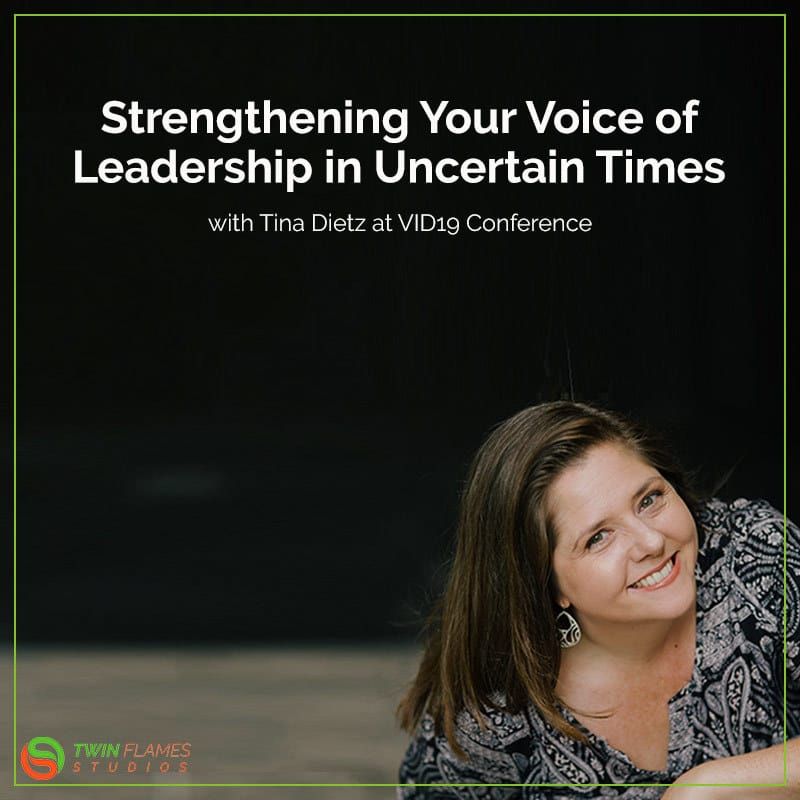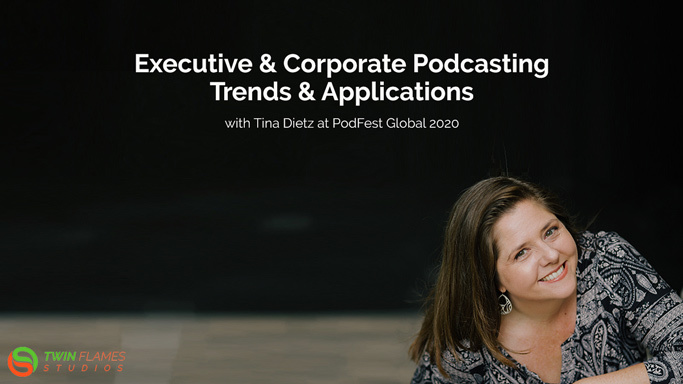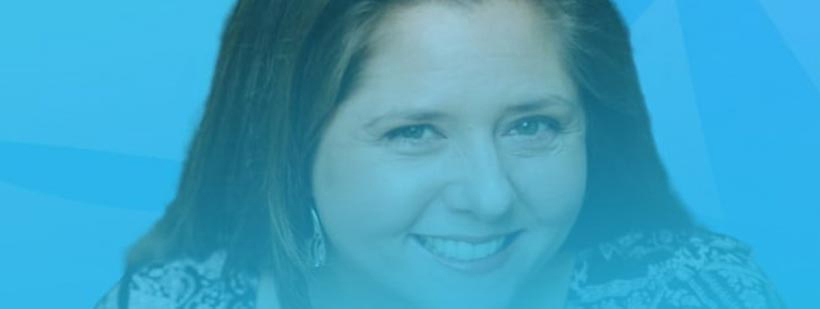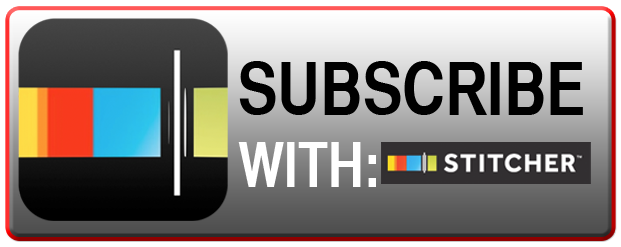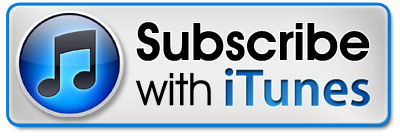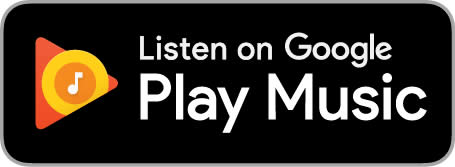Strengthening Your Voice of Leadership in Uncertain Times — Tina Dietz
I invite you to join Julia Steele and me at the VID19 Conference and learn how to strengthen your voice of leadership in uncertain times
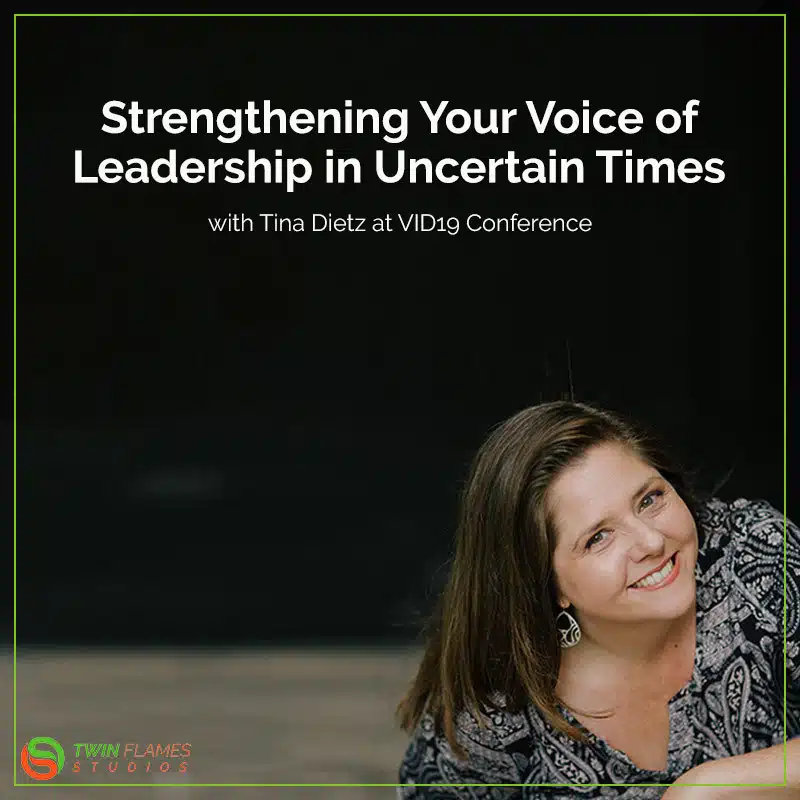
Hi, everyone, and welcome to day eight of the VID19 Conference. My name is Julia Steele, I'm the creator and host. I cannot believe we are on day eight already, but days are flying by and the feedback has been absolutely brilliant. So, thank you so much for everyone that has reached out to me and the other contributors. It's great to see you all getting so much value from this conference.
It's traditional in Australia to acknowledge the land that we stand on at the start of every conference. So, given we are on a new day, I am just going to acknowledge that I am standing on the land of the Wurundjeri people, of the Kulin Nation. I extend… Sorry, I, I'll start again. I want to acknowledge the land, the land that I stand on, and the people of the Wurundjeri in the Kulin Nation. And I pay my respects to their elders: past, present and emerging. I also extend that to all First Nations people that may be joining from around Australia, and overseas as well.
We are joined by the wonderful Tina Dietz. She joins us all the way from Florida. I just love that this is getting more international by the minute.
So, Tina, thank you so much for joining us. And you're gonna help us sort of explore and strengthen our voice, you know, while we lead through these uncertain times. So I can't wait to, to see where you take us with this. And thanks, again, for joining from Florida.
Oh, it's my pleasure. Anytime we can reach out to each other across the globe, it's always a privilege. So I really appreciate that.
Okay, so leading in uncertain times.
I know, Julia, you speak a lot on this as well. So, this is a topic near and dear to my heart. Just to share a little bit about myself.
I've been an entrepreneur for many, many years, many decades, I grew up as one. And I also found myself trained as a therapist. I have been in business for a couple of decades building businesses around the world, more than 20 different industries, and about eight or nine different countries now and counting.
And my company, Twin Flames Studios, works with leaders, executives, trusted brands, and entrepreneurs to help amplify your voice and your message not just to your audience, but also to your team, to new people who are looking to find you. And we do that through audiobooks. We do that through podcasting. And we also do that through what we're going to talk about today, which is vocal leadership. And a lot of people haven't heard about vocal leadership. So, I'll explain more about what that means in just a couple of minutes.
But you know, with everything going on, I'm just, it's funny, I think this is about my—I've always used Zoom a lot, my company has always been mobile so I feel very fortunate. And this time to already be in a place to help other people work with online formats, work with audio formats, because this is what I've been doing now for more than a decade. And it's… But sometimes I am on Zoom so much I question that I actually have a lower half to my body. And it gets a little weird after a while. It's like, “Do I exist from the waist down? I'm not entirely sure.” And I'm also pretty sure that the unofficial tagline of Zoom is “Zoom: Pants optional.” So I don't know if you're wearing pants joining us here today. You don't have to because you're not on camera. Actually, I don't have to either. But I am, I assure you.
But what we're gonna be talking about today, just to—And I'm super curious if you want to put into the chat, anything about what brought you here today? Where you're from? I'm monitoring the chat. So, I will definitely be taking questions as we go along—If there's something that comes up. My preference is to be highly, highly interactive in everything that we're doing here, because the best way that I can serve you is by covering those areas and covering those topics that are going to be most relevant to you. So, as we're going along, if something pops up for you, please do put it in the chat, ask questions again, feel free to introduce yourself, so we kind of know who's out there. We had a really lovely turnout for this today. And I'm excited to get to know you as well.
So how to strengthen your voice of leadership in uncertain times, and what exactly is vocal leadership, and what makes it important?
So vocal leadership encompasses a wide range of topics. And this includes
- Your personal vocal mechanics—which we'll talk some about today.
- The dynamics of communication
- Team communication
It's present in meetings and presentations—when you're live and in person, and you can actually, you know, touch elbows, things like that. It's present when you're in online presentations like this. It is also present in your speaking peer to peer and networking. Anytime that you're using your voice, vocal leadership is present.
The two areas that we don't think about our voices being present, but they are very much present are
- The voice of your message or your brand
- And how you know who you are and what you stand for—and your values come through that particular modality of your voice.
And the very most important part of vocal leadership, which is your inner voice, and what that tells you, how that informs you because that inner voice that you have—or maybe it's lots of voices, as I can attest to myself. That is one of the things we're also going to discuss today is that inner voice as well as the outer voice—so meetings, presentations, sales conversations, conventions, conflict resolution, performance review, team collaboration, vocal leadership encompasses all of these areas and has a significant impact on your performance on the culture, on everything that happens.
And the two areas we're going to focus on today to help you be the calm in the storm, are:
- The mechanics of some vocal leadership technique to help you lead during meetings and conversations. And these are going to be useful to you in any situation where you're the “leader”—I'm putting that in air quotes, because some of these situations, we don't think of ourselves as leaders. Certainly working with our teams or working with clients, working with freelancers, any of those areas, sure. But you may also be having a leadership role in parenting, taking on being a leader or holding a space of calm in your other relationships with friends or in the community.
- And we're also going to be covering ways that you can manage your own inside voice, your internal conversations and habits about what happens, you know, inside of you as you're looking to communicate with other people.
And the key to vocal leadership is aligning these inside and outside voices, being congruent. And that's truly where authenticity lives. And if we're looking to truly be leaders, then authenticity is where we must stand as much as possible at all times.
So, when we start with the vocal leadership mechanics, there are four factors we're going to focus on today—there are far more than that. But the four factors we're going to focus on today that have been shown in research to significantly impact how you're perceived as a leader and your credibility, are:
- Articulation
- Tempo
- Flow
- Sonority
I'll say that again, articulation, tempo flow and sonority.
Articulation is how clearly you speak, how understandable your words are. And the more articulate you are—not over articulate, because when we're over articulate, we start to sound like a snob, and nobody likes that. Under articulation, of course, kills your credibility because you start to slur your words, you're not understandable, and then people wonder if you really know what you're talking about. But articulation is important. And particularly since we're talking about online meetings, and non-visual meetings, in many cases, articulation is extra important because people need to be able to understand you. And they need to be able to be very clear on what your words are and how you're speaking.
The second area is tempo. And tempo is arguably the most important factor to focus on. Tempo is your natural speaking speed. Now, I live in Florida, but I'm originally from New York. Not New York City, but Buffalo, New York, on the opposite end of the state. But nonetheless, being from, you know, that area, the Northeast, we tend to speak pretty quickly. That's a natural tone for me, I'm never going to be somebody with a lower, slower, more laid-back tone of voice—like you might find from people from the southern US or from other countries where the cadence is much, much slower. So, it's natural for me to have this slightly faster tempo. Your correct tempo is whatever is right for you. And it is, in research, in all the research studies, probably the top factor in what makes you most credible as a leader and what makes you sound most trustworthy.
This is because it has a lot to do with your breathing. Everything comes from the breath. And when we are breathing to shallowly and our voices start to speed up that's an indication on a very biological level that you're nervous, that maybe you're lying, or that you're angry, depending on how you're presenting to people.
On the opposite side of things, if you're halting and your tempo starts to slow down, then you lose people's attention. And they start to fade off. And they're not really focused on what you're saying. And that's a credibility killer as well. So, the most important thing we can do on the mechanic side of things, first of all, number one, is to focus on our breathing. Practicing your breathing—and this can be do through yogic breathing, it can be through something as simple as what I call “The 4-4-4 Breath” and this is where you inhale on a count of four, you hold for a count of four, and you exhale on a count of four. And this helps normalize your breathing, which helps settle your parasympathetic nervous system, and creates more calm throughout your body, which translates—of course—to your brain, and how you're connecting with your audience, or the person you're sitting in front of, or your child, or whoever it is that you're communicating with. And we hear about breathing a lot. But we don't necessarily always take that advice. If we take a few moments, it can make a tremendous difference in how we're perceived by other people.
The fourth factor is flow. And this is how smoothly your words come out of your mouth. This also is indicative of the dreaded “uhms” and “ahhs”. When you're a public speaker or you give a lot of meetings and presentations always tell you, “Oh, you got to watch how many times you say ‘Um,’ and ‘ah.’” The problem with that is that the more you think about “uhms” and “ahhs,” the more you tend to save them. It's like don't think about pink elephants, and there's the elephant, right? So, if you give yourself some room to let go of being concerned about the “uhms” and “ahhs,” the best thing that you can do is focus on the other person instead of what you're saying. Not on their reaction, but in being present to them, even in an audio-only situation. And we'll talk some more a little bit later about how our audio-only—when we're listening—and how audio-only actually can heighten our senses, and how we interact with that, and how we can trust ourselves and our listening when it's audio-only. When we're in a situation where we are listening to other people, focus on them, be present to them, and many times that will get rid of the “uhms” and “ahhs” because those “uhms” and “ahhs” are indicative of our own brain interrupting us trying to get us to say things a certain way, or questioning ourselves in our internal conversation if we're saying the right thing or not. We get worried about “Oh, what do I have to say next?” And that interruption of train of thought can really damage your flow.
So again, coming back to your breath, keeping yourself calmer will help your flow and help get rid of those “uhms” and “ahhs,” and increase your rate of flow for that extra boost of credibility and leadership.
And the last factor we're focused on today is called sonority. Sonority is the pleasantness of your voice. And in truth, most people, the more they practice these other factors—articulation, tempo, flow—the more you take care of your voice, the more your sonority will rise. Not everybody has a naturally super pleasant voice, but you have to work with the voice that you have. That's the only choice that we have—is to work with the voice that we have. And it's a funny thing, when I speak to groups of people—and I'd be curious as to what happens here with this audience—when I ask the question, “How many of you here like the sound of your own voice?” How many people do you think raise their hand? Yeah, pretty much nobody. About 80% of the room will tell me—on any given room—that they do not like the sound of their own voice. And this goes even for podcasters and professional speakers. Even in rooms like that, I'll get 50 to 60% of the room saying “Ehh, I don't like the sound of my own voice. I like my content, I might be able to own my identity as an expert, but the sound of my voice?” Right?
So, it takes something to get used to the sound of your own voice. And truly the only way out in that situation is through, as the old saying goes. You have to listen to yourself back and learn how to appreciate sometimes you just have to get used to it like a habit over and over again—listening to yourself doing interviews on podcasts, listening to yourself just doing recordings are around your house with your own musings, and things like that. And find ways that you can appreciate the voice that you have. Even if you are, you know, find yourself concerned about things like an accent, I'm going to ask you to let that go. Because what makes you unique is your voice.
And if you have any concerns about how understandable you are, then we go back to practicing the things like articulation, and tempo, because all of those things are going to help make your voice more understandable, depending on the audience that you're trying to reach.
So, the other factors around sonority that I wanted to touch on are two credibility killers. And these are far more prevalent in North America than they are in any other part of the world. So, I'm very curious for our audience in Australia if you see this as well. And those two credibility killers are what we call Up Talk and Vocal Fry.
So up talk is where you make every statement sound like a question. And that really makes you sound not credible. Because you make you sound like you don't know what you're doing. And that's an example of what up talk sounds like. Most people will up talk the end of their sentences when they're not entirely sure how their message is going to be received. If you're doing a live networking event, for example, and you have to give a 30-seconds “Hi, my name is so and so. And my business is such and such,” you'll hear a lot of up talk in people sentences, because they're kind of questioning how they're going to be received in the room. This is another good area to ask somebody else, rather than try to figure it out yourself, if this is a habit that you have—it's actually kind of difficult to hear if you do it in the moment, and you can practice will be called downstrokes. So up talk would sound like this: “Hi, my name is Tina Dietz, and my company is Twin Flames Studios. And we help amplify the voices of leaders and authors and companies around the world.” Sounds a little off, right? Speaking that with downstrokes with sounds like this: “Hi, my name is Tina Dietz. And I'm the owner of Twin Flames Studios, where we amplify the voices of leaders and companies and authors all over the world.” Sounds a little different when you get to hear the contrast between the two. So, you can see why that's a bit of a credibility killer.
The other one I mentioned is vocal fry. Now I have a hard time even doing vocal fry because my voice doesn't like to do it. I've trained myself out of it. But if you're familiar with the American celebrities—the Kardashians—these guys are a good example of listening to vocal fry, it makes you sent voice sound like it's a little bit bored or dismissive, because you drop the ends of your sentences down into your throat. And it's kind of a vocal fry kind of sound. You'll also hear this on American radio, on National Public Radio a lot, particularly with the male hosts on shows if you listen to podcasts, you'll hear this quite often in a lot of professional level shows. But the thing is, the reason it's a credibility killer is—and it's not with those guys who are professional hosts or even with the Kardashians—is we're not looking to take advice necessarily from the Kardashians, or from a radio show host who's doing a game show, we're looking to be entertained by them. So, the vocal fry doesn't matter for their credibility because we're not looking for credibility.
But when you take that same vocal fry, and you put it into a situation where somebody's doing a job interview, we find in the research that across the board—regardless of gender, regardless of age, regardless of race or any other demographic situation—if somebody is giving their answers in a job interview with vocal fry, they are across the board seen as less trustworthy, less credible, and less hirable. So, it is a habit that we do take try to with our leaders try to coach you out of because it can be damaging, particularly if it's done a lot. Here or there you are having a bad voice day, fine. But habitually? Not so good. So those are the two credibility killers with sonority.
Now when we're in a meeting, and you're running something with a team or you're running a program, you can keep these factors in mind. But what's more important is that you practice them ahead of time. So, articulation practicing with things like tongue twisters, and facial exercises are really important.
Tempo, as I mentioned before, the best thing you can do to work with tempo is to work with your breathing. And that tempo piece will flow over—no pun intended—over into the flow and sonority areas as well.
Listening back to yourself as the other best thing you can do for your vocal mechanic so that you can start to identify—And this is not a situation of beating yourself up. This is listening to yourself to say, “Okay, what can I add?” Or “What can I enhance?” Or “How can I create my next level?” That's the conversation that we're in. This is only a conversation between better and best, I never want to hear you beating yourself up for the voice that you have.
And by the way, we have put together a Vocal Leadership Workout for everybody that you can download. And it's got tons of exercises in it, and it also has links to some articles that I wrote for Forbes magazine, and some other places on different aspects of vocal leadership. You can download that we'll put the link in the in the chat as well at TwinFlamesStudios.com/vid19. And that's… I really, really love this vocal workout, I have all my clients do it to get them going. Because we don't think about our voice as the machine that it is, as the muscle that it is. And the neck muscles and the throat muscles around the voice are very complicated. There's a lot of people… You think about it, you have basically a popsicle stick holding up a bowling ball. That's the musculature of your neck. And it's all these crisscrossing tiny little muscles. And if you go to massage your neck or your throat, you can start to feel it like “Holy crap! That's like piano wire in there! That is really, really tight.”
So, allowing yourself… give yourself some throat massage is really, really helpful. We'll talk about that, along with some other techniques a little bit later when we get to talking about managing your inside voice, which we're about to switch to right now.
So, all of that being said about the mechanics of your voice. You know what’s really important? The inside part. Yes, it's important to have all these factors and to practice to manage the articulation. There's lots and lots of different things when we work with podcast hosts, or we work with authors who want to narrate their own audiobooks, there are a lot of mechanics that we go through for phrasing, and asking certain questions, and speeding up, and slowing down, and different listening techniques. All of that is wonderful and valuable. But if I gave you nothing else today, it would be to talk with you about who you are being when you are being a leader, and it coming through your voice that way. So this is all about your inside voice.
It's who you are, and who you are being far more than what you're saying that's going to make the biggest impact on who you're communicating with. We are wired as human beings for empathy. 100%. All the time. We are herd animals, we are social animals, so to speak. And we have these wonderful things called mirror neurons. Mirror neurons allow us to kind of see and understand or feel and understand what somebody else might be feeling. And mirror neurons and empathy kind of cuts both ways. Those mirror neurons that make us able to identify and feel so strongly when we're watching a movie, and the dog dies, or your favorite character falls in love. We feel those feelings even though those events aren't real. That's how powerful those neurons are. And that same biology is what people are reacting to when you're communicating with them, even with non-visual communication. So, for example, have you ever been on the phone, and all of a sudden your stomach drops, because you sense that something has changed without the other person saying anything. Or if you're a parent, your kids are playing in the next room, and suddenly the sound changes, and without even knowing why you find yourself going into check on. And then there's music. Our emotional state can change in an instant, just for those first couple of bars of our favorite songs. So, here's the thing.
You have that same impact on everyone around you. Every single day, we impact those around us whether we're conscious of it or not. And the opportunity for each and every one of us is—Do you want to make a conscious impact or an unconscious impact simply through how you're being? So, have you ever thought to yourself who are you being when you're being the best version of yourself? Who you being when you're being the best version of yourself think about that for a moment. And I'd even invite you now to close your eyes and see where you can feel—see what I said, “See where you can feel?” it's kind of a dichotomy there. But think about it just close your eyes go inside. Where do you feel those emotions in your body when you think about when you feel the best? Think about a scenario about when you have felt the best, maybe a peak experience is, or working with your clients, or, you know, you had a really great experience speaking, or running a meeting, or you had another accomplishment. Where do you feel those emotions in your body? And how would you identify them? A couple of places you can think maybe to check in are your chest, your throat, maybe you have this level of calm alertness. I hear that a lot from clients of level of calm alertness, like you're ready, but your calm. It's a really cool way to be.
You see, we're never taught to practice our emotional states, like we're taught to read, or throw baseball, or create a presentation. But it is a skill, like any other. Intentionally bringing up an emotional state and putting it on—like putting on a new jacket—is something that we as human beings have the absolute ability to do. And it's something that is a very worthwhile practice, because it's not so much like you have to control your emotions, but it's a conscious shifting and a conscious choosing of who we are going to be. And as a leader, this is incredibly important as an internal skill. So, let me break this down into a more practical state.
One of the ways that we train authors who want to narrate their own audiobooks, and our podcast hosts, and our vocal leadership clients to practice these different emotional states, one way we do that is to take a passage from a book—or if we're working with an author to passage from their own book—and read it in different emotional states. You know, and I'm going to give you an example right now. I've got some classic quotes queued up in front of me here. So, this is the first line from The Great Gatsby. So, I'm going to read it normally. And then we're going to try on some different attitudes or different emotional states with it. And you can try this on your own with—open a book and just try doing it in different ways. And the trick is to say, “Okay, as I'm reading it in these different attitudes, how does that feel in my body? Where do I notice it?” so you can bring it up really consciously?
So, here's the first line read straight. “In my younger and more vulnerable years, my father gave me some advice that I've been turning over in my mind ever since.” Okay, let's pick a let's pick an emotional state—let's do sad and regretful. “In my younger and more vulnerable years, my father gave me some advice that I've been turning over in my mind ever since.” Or if we can try angry. “In my younger and more vulnerable years, my father gave me some advice that I've been turning over in my mind ever since.” Right? Maybe we can try excited. So I'm really excited to share, okay. “In my younger and more vulnerable years, my father gave me some advice that I've been turning over in my mind ever since.”
Okay? So those are some different emotional attitudes. And when you're practicing this, I invite you to practice it in a big way, in an overplayed way, in an over dramatic way, so you can really emphasize. And then every time you do a different emotion and try on a different emotion, close your eyes after you do it and see where you can feel it in your body, see where it raises or lowers your energy. And just start to get a little practice doing this. Because your emotional states are something that you many, many times can choose. And this is also very helpful when you are managing people because as leaders, we tend to be “emotional Velcro”—things stick to us, and we can help it because we're empathic and we care. So, you might start out your day feeling really great, and then help people through a whole series of problems, and then by noon, as you're taking a break, you make time to take a pause and go “Okay, is anything sticking to me that might be somebody else's?” Taking a few deep breaths and blowing it out. So, when you kind of clear yourself, there's some different ways that you can kind of clear yourself throughout the day. And clearing yourself throughout the day is super important because of this “emotional Velcro” state that we go into. And because we can shift emotional states, as quickly as we want to. We tend to be—if particularly if you're a coach, if you're speaker, if you are a conscious leader, and you're out there working with people, you've probably been on a ride with people through this empathic state that you have every day. And so, it's important in between times, to take care of your vocal leadership. To pause and see what your internal voice is telling you—has something anybody said to you kicked up an old belief maybe of something that, you know, kind of mirrored off of a client or a colleague, that you need to take a moment to shift? Or maybe someone had something really dreadful happened to them, and even though you didn't totally take it on, there's a little bit of something you need to process.
There's a couple of different vocal techniques you can do to release some of that stress physically, that then translates again to your nervous system and help you bring back that balance or that homeostasis, that internal / external voice congruency that we're looking for. And one of those is something that I mentioned a little while ago, which is throat massage. The throat is a very vulnerable area for most of us. It's not something we allow people to have access to, you know, you touch people on the shoulder, you touch people on the arm, you might even touch people on the knee, give them a hug, but somebody touches your throat? This is a very vulnerable space. So, giving yourself a few minutes to give yourself a little bit of a rub, or slide your fingers particularly up in this area on the bottom of the jaw. Thumb presses—thumb presses down the side. There's a massive muscle that goes from the bottom of your ear all the way down to the throat called the Sternocleidomastoid—say that five times fast. That's a big muscle that also is related to TMJ. So, if you have any jaw issues, sometimes massaging and giving some attention to that big muscle will be a relief for you. So that's one thing you can do to relieve some stress in that area. The second one, I also alluded to, and that is blowing it out. But I also like to refer to it in honor of my grandmother as “The Italian Grandmother Sigh.” And so, this is again, something that helps activate the relaxation part of our nervous system, and it's simply taking some large deep breaths and allowing a sound to come out on the end. So just “Aaaaaaahhhh.”
And I remember my great grandmother sitting in crocheting in the afternoon, and every so often, she would just let out this deep sigh. And I realized years later that that was her way of just releasing tension. She wasn't trying to get attention, she wasn't being dramatic, anything like that it was her body just even unconsciously, just releasing some of the tension that she was going through. So that's another very simple, very, very easy technique that I would recommend.
So, in particular, before you go into meetings, check in with yourself and see what you might need. It's very, very easy for us to get caught up in the doing. But it's the being that allows us to stay on track and go with the flow and be the biggest help of those other people that we interact with and that we lead.
One of the questions I get asked by leaders a lot, is “How much should I share personally with my team, how open or vulnerable is good to be?” Now this question came up long before we were dealing with the global situation we're dealing with now.
So, let's go back to our example of being in an online meeting or a conference call. And so, let's say you've been conscious of your way of being and you're bringing a good version of yourself to your phone call. You are ready to listen to people, your empathy is turned on high, you feel good, you’re breathing, your tempo and articulation are natural and flowing for you, and you're kind of embodying this calm in the storm for your team.
Now as you start your meeting, what many leaders are reluctant to do, but is extremely important to do particularly in times of uncertainty and difficulty is—it's important to acknowledge any elephants in the room. These concerns or issues that your team might be dealing with, but maybe they're reluctant to bring up. So, you as a leader holding a space for what we call clearing is going to help your team be fully present and deal with the task at hand and focused. So, regardless of the way you have this clearing—and there are several ways to approach clearing, I think there are going to be a little outside what we have time for today. But the point is that your role is to model what we would refer to in storytelling as telling the story from the scar, not the wound. Telling the story from the scar, not the wound. So, here's how that looks or sounds. This is where you acknowledge what you may be feeling or going through that's impacting you. But keeping in the clear state of being that you're holding from the team.
So, for example, you might share at a time like this “No, overall, we're doing pretty well, I have to admit, something that's on my mind is my elderly parents live far away, and my mom has some issues with her lungs. So, I have to admit this is causing some stress. And I'm grateful to be able to be in contact with them. And I know they're taken care of, but it's something on my mind. So, I'm just saying in this clearing that even though that's on my mind, I'm going to set that aside, so I can be fully present with all of you.” So that's telling the story from the scar.
If you were to tell the story from the wound, and you've probably heard this in meetings, it might sound something like, “I'm really worried about my mom, I don't know what I'm going to do. This whole thing has gotten me so stressed out, and Oh God, guys, I'm so sorry. But I, just you know, I'm having trouble focusing. And I know this is really hard for everybody.” That's what telling the story from the wound sounds like and it creates a totally different energetic scenario in a meeting. It's definitely something that's going to impact your team. They're going to immediately feel that, and then they're going to be reacting doubly, because not only are they then worried for you. They are—instead of an area being compassionate, or empathetic with you, which is you would they would hear and react to the first way—now they're going to be worried. And they're going to have their own worries on top of it. And then they're worried that you're going to freak out and then they have to carry the burden. And then it's going to spiral.
So, telling the story from the scar, not the wound is the primary cardinal rule, I want you to remember, when you're thinking about how to deal with being the leader in conversations that are challenging, times of high stress, high uncertainty. You are there holding the space. And that's why it's important, you know, not to go from meeting to meeting as much as possible but to leave a little bit of space in between even if it's two or three minutes. To regroup, check in on your way of breathing and being and get your nervous system in homeostasis before you walk in, with that your voice intact, with your being intact at the same time. So, modeling this leadership behavior is super powerful for any team to keep people focused, clear, and also feeling connected to each other and to you.
So, I am known in the circles that know me as a bit of a fire hose on this topic and whatnot and give a lot of information and a lot of topics. And I do just want to remind you that a bunch of this, and these tips are written down in the Vocal Leadership Workout I mentioned at TwinFlamesStudios.com/vid19.
I want to pause for a minute before I lay on any more, and just see about questions, and opening up the floor for comments, and things like that. So, let's take a look here. Oh, this is very cool. We got Canada, Melbourne, Australia. Oh, good to know Australians very commonly use up talk. I yeah, I have my I have several Australian colleagues and I haven't heard of them. So, I have been curious about that.
It's pretty, pretty common in the media in particular. So, when you're watching the news—
Really?—
We talk, and we talk, and we talk, and when we go up at the end, and everything's great.
Very common in Canada as well, as well as the Midwest of the US. But really, it's a human thing. Yeah, it's very much a human thing. So, I'm very curious in all of the info I just threw at you guys, any kind of questions you might have, or if you'd like me to go deeper or clarify on any particular topics. And while you guys are typing, I'm going to go ahead and put that link into the chat.
If you've got any tips, or if I can check out your website, because I find it takes me a while to get my voice warmed up in the morning.
Absolutely, absolutely.
And is there things on there that I can—even now like I'm talking to you, I'm like “I could do with some more cup of another cup of tea or some honey or—“
Definitely. Yeah, those are those are all good things. Yeah, there's a bunch of things in there.
One of the things we can definitely use gargling with warm salt water is really great for breaking up mucus, particularly, excuse me in the morning. Another thing we always tell folks, if you're going to be doing a lot of speaking, of course, stay away from dairy, citrus, and if you can stand it coffee—I usually ignore that last one. And so those all are things that tighten the voice. Yeah, any kind of really heavy meals. Anything that's going to kick up your stomach acid—if you tend to be sensitive and all of that—may impact the quality of your voice or the stamina of your voice. If you have stomach acid coming up, it's going to erode your—it's going to make things more tired.
Sleep is another big one. You can usually tell if somebody's tired by the quality of their voice. Their energy is going to be a little off, they're going to be a little slower, they may start to “uhm” and “ahh” again. So, sleep as much as possible is really a good thing to take note of. And that throat massage I mentioned before, is important.
I'm a big fan, I drink a lot of tea. So, I'm usually get some sort of tea, yeah, ginger, tea, anything herbal tends to be good for the voice to kind of keep things going. Some people have some issues—and sometimes it's just the day—with mouth smacking noises or that kind of mouth click sounds, which is super annoying. And so, if you know that you are somebody who has a tendency to do that, a trick from the voice acting world is to have a bite of an apple, or particularly a green apple. And there's something about the pectin and the acid in the apple that helps to alleviate that mouth smacking noises. Many times, if you go into a professional recording studio, you'll see a bowl of apples on a table. And most people don't know why that is. But it helps to alleviate that. Chapstick is also helpful to have for that. But sometimes water doesn't do it. It's another thing you got going on. That also does point to dehydration though. If you get a lot of mouth smacking noises, chances are you have some dehydration. Speaking of which…
I think it's such a fascinating area, like you said, your comment around, we've got something quite thin holding up a whole bowling ball. And I never thought about it like that. But if anyone's got any questions really encourage you to put them in the chat. Tina, I think I've become more aware of my voice, the more I speak. And particularly having sat on this conference now for what eight days I can feel my throat—
That’s a big job—
Getting a more of a workout than it would normally do. So, thank you so much for sharing your insights. I've already opened your link that you popped in the chat. So, I'll be downloading some of the cool leadership stuff too. So yeah, it's, it does make a difference. And even just listening to you reading that same sentence with different emotions is actually… Yeah, actually, what do I want to come out?
What do you want? What do you want to come out?
Yeah. So, we're working with authors who want to narrate their own books, we'll practice with them, like “What's the way of being that they want to come across as?” And they're kind of amazed when they listen back to themselves, how their voices, how it lands with the listener. Yeah, and sometimes it's not what you expect, sometimes, a more gentle approach is not the best thing. Really just depends on what you're looking to convey. Sometimes a much… You can go way bigger than you thought you could. And that's good news for people like me with, you've always been trying to like not, you know, overwhelm people with our big personalities and all that.
When you're working with audio, or you're working with a medium when you're not in person, many times you can go bigger than you can when you are adding that physical element to it. Not on a stage—stage, you can go really big as you get a big room and all of that. But, you know, if you, I'm sure you've been in networking events where somebody is just like, “Hi!!!”, you know? And they're just really big, and in your face, and all of that. It's “ahh!” you know, personal space. But online, we have a lot more room for people to get in our face, because they're not really there. There's a bit of separation, kind of an energetic level, and also, in our personal space. We don't have any kind of automatic—necessarily—any automatic reactions to someone coming that close to us physically. And again, that's very cultural. Some cultures have very, very close physical space, some it's way further out. So, the online formats do make it more flexible in that particular sense.
But we're finding a lot of teams—and particularly in corporate—are even doing just audio. And there's a lot of advantages to doing just audio meetings. One is it changes the way that you listen. You don't get triggered by people's facial expressions, you really just have to listen to what they're saying and how they're being. The second thing is, is you're not worried about, like, you and I are on camera right now, and you know, we're a little bit crow-like. Sometimes we're like, you know, checking our stuff. You know, am I in the right position? How’s my chin, you know? All of that kind of stuff. So, it helps to relax the people in the meeting. I was just coaching someone who runs a PR firm for executives on running online meetings, and taking their live meetings on to Zoom and audio format. And one of the things that we talked about extensively was, video / no video, and we decided on no video, and she got a lot of feedback afterwards about how comfortable that made it for people to not have to worry about their background, or if they've done their hair, or if their kids were around or you know, especially in the circumstances we're in right now. And that really allowed them to just be present with the content. And they were, you know, she was interviewing Fortune 100 CEO, you know, and normally you do want to like, look your best and all of that to be in something like that. And they could just like, you know, be in their jammies if they really wanted to, and still have this professional conversation.
So, I really think that audio-only formats for online meetings is highly underrated. I work with the majority of my clients—and always have coaching clients, consulting clients, podcasting, audiobooks, vocal leadership—primarily via audio only, so that you learn and you actually train that listening, because there's so much that you can pick up. And it gets quite fascinating once you practice it for a while and you're not relying on the visual cues anymore, what you can hear, and then start to trust your intuition and ask questions of people—
Yeah—
To get that.
I've been wearing my air pods for every session for the same reason because it blocks out all of the atmospheric noise. We have some pretty chatty parrots in our yard, and cats like to meow, and all of that sort of thing that we don't have in an office either.
So, Tina, thank you so much, sending so much love, and thanks from Melbourne. If you're ever in Australia, please let me know. And next time I'm in the States—
Tina Dietz
I will pick you up on that.
Perfect. Thank you so much—
Thank you so much, Julia. Thanks everyone.
Thank you.
Interested in learning more about how you can strength
your vocal leadership in uncertain times?

